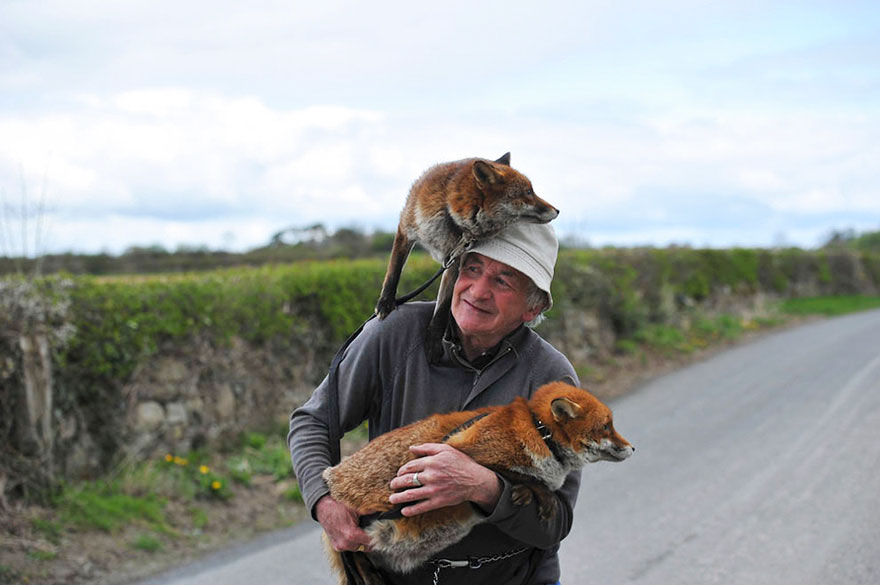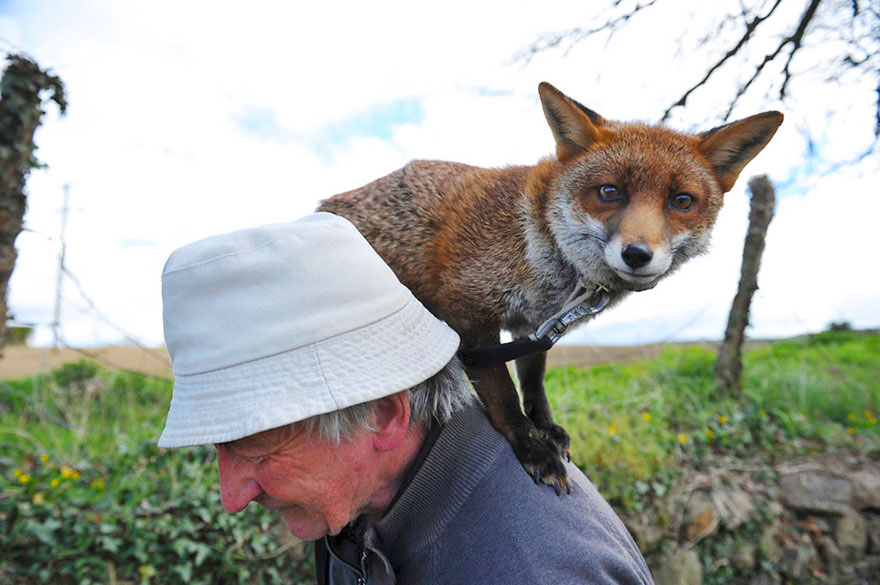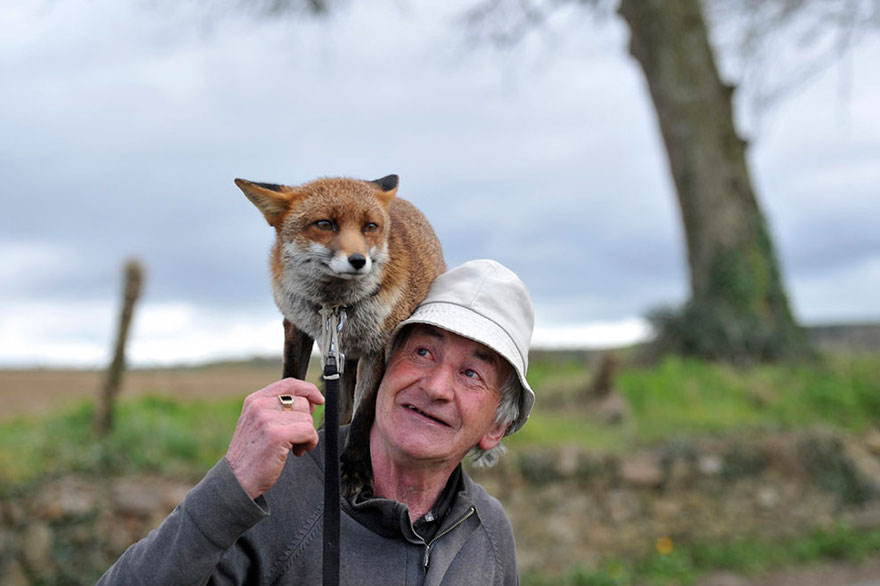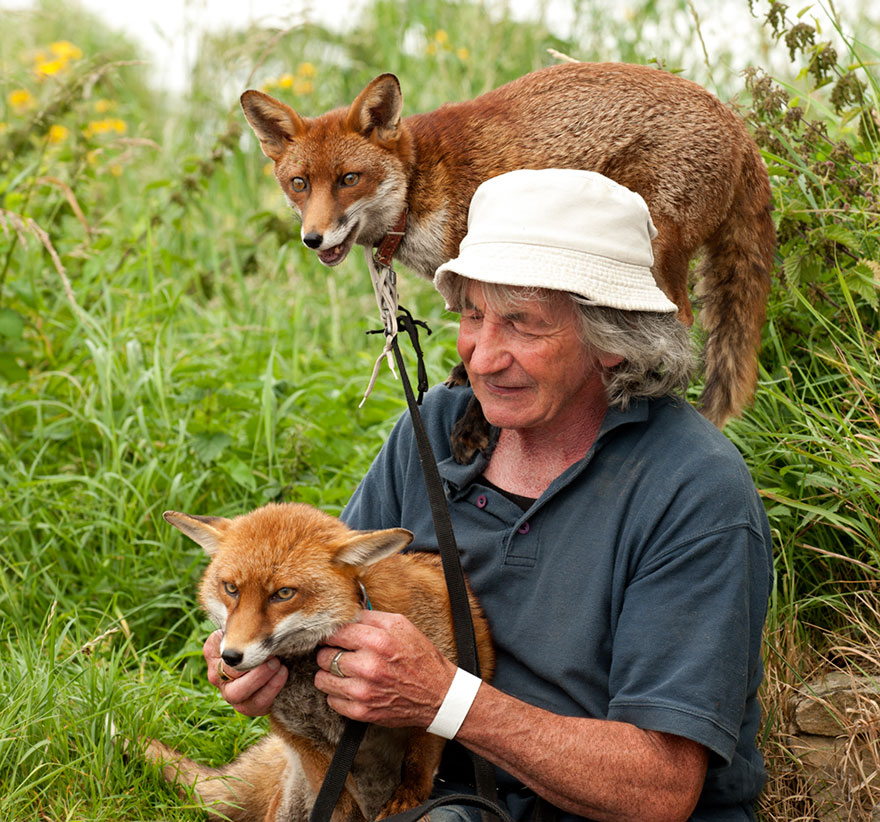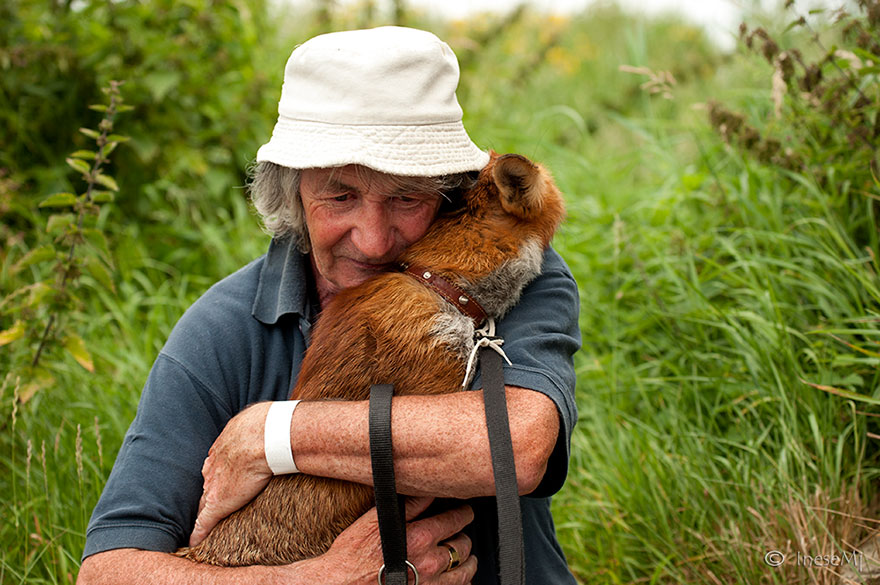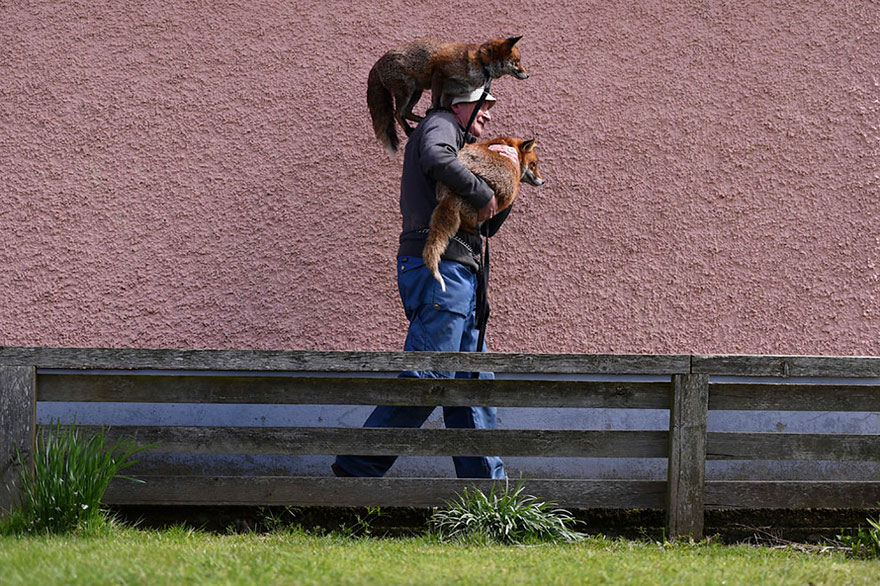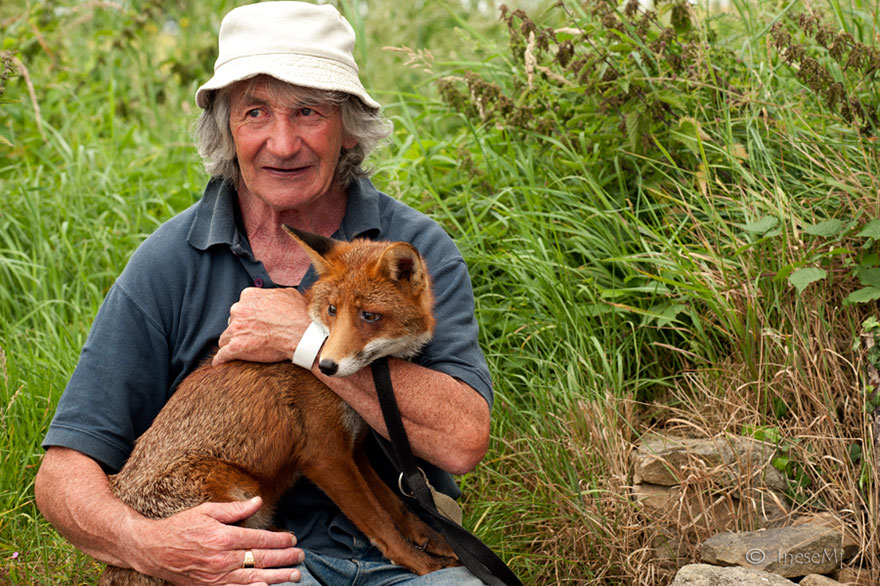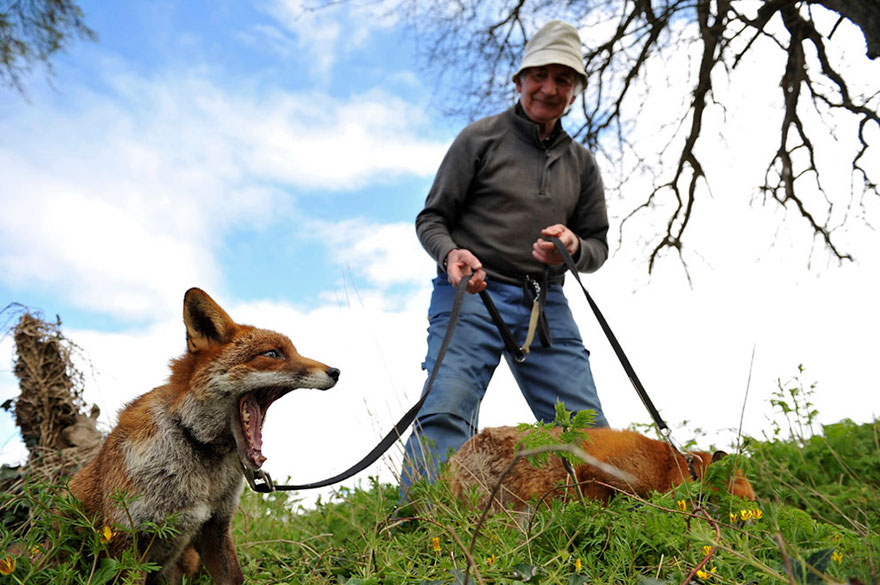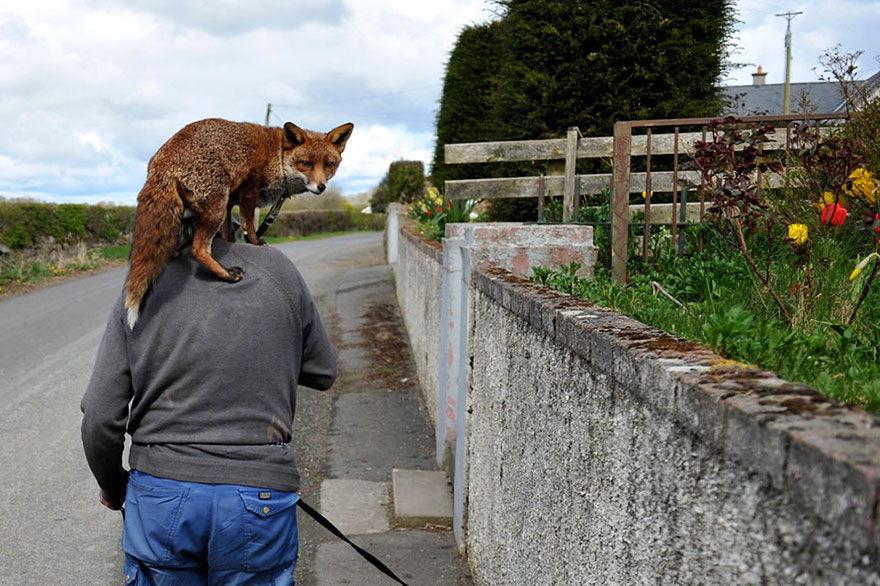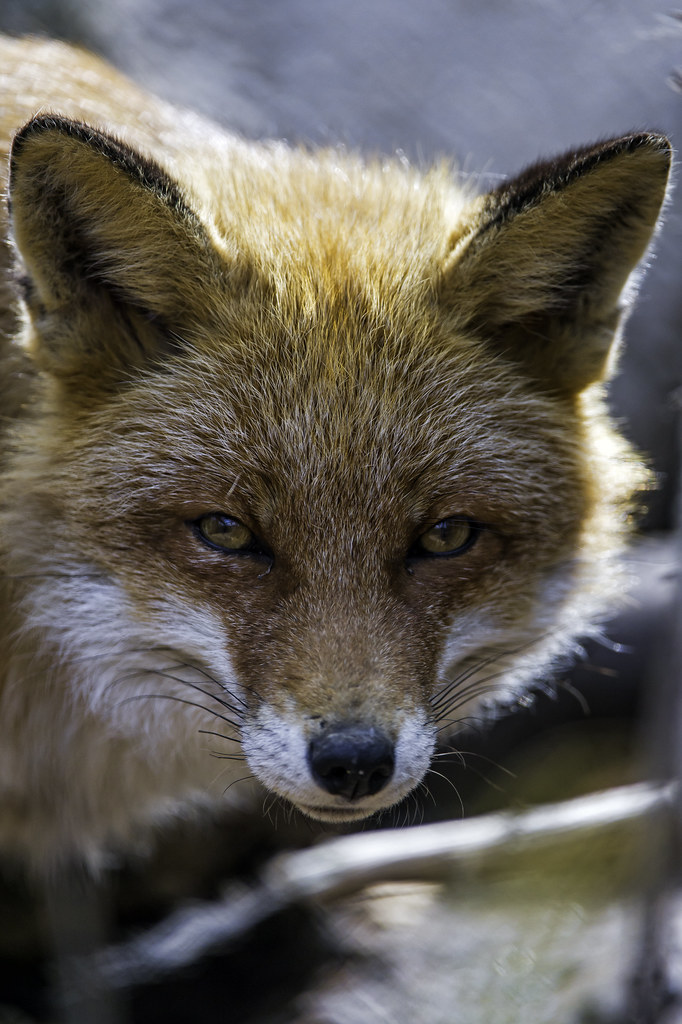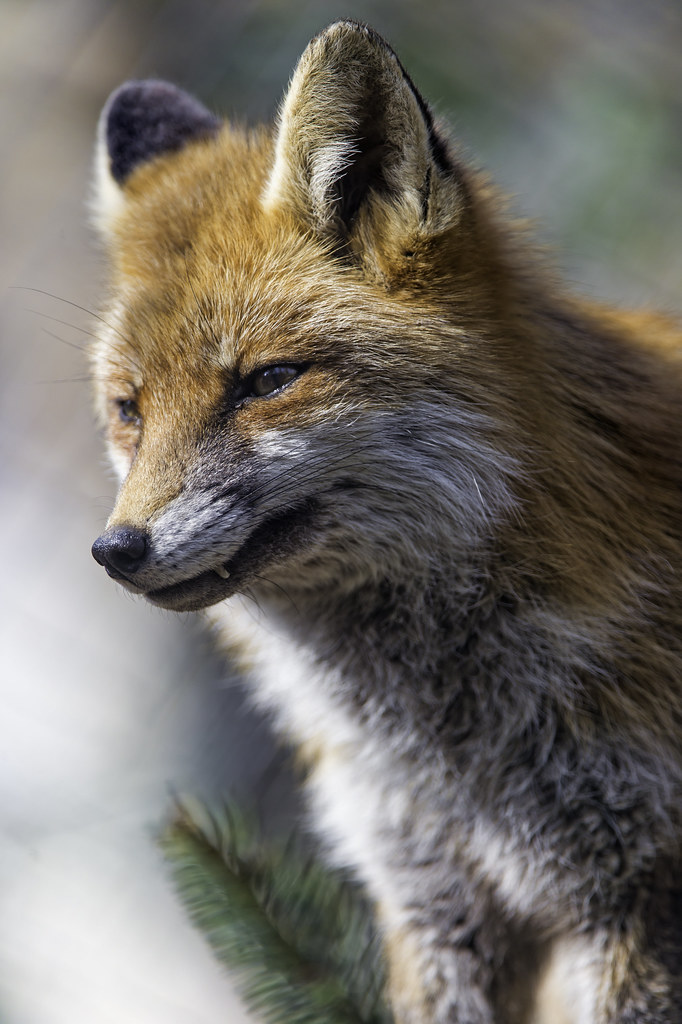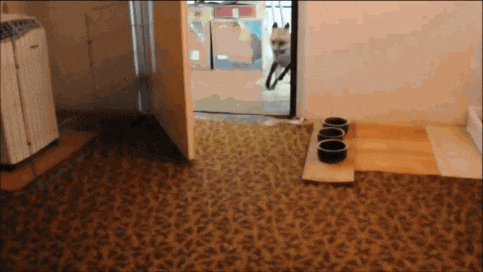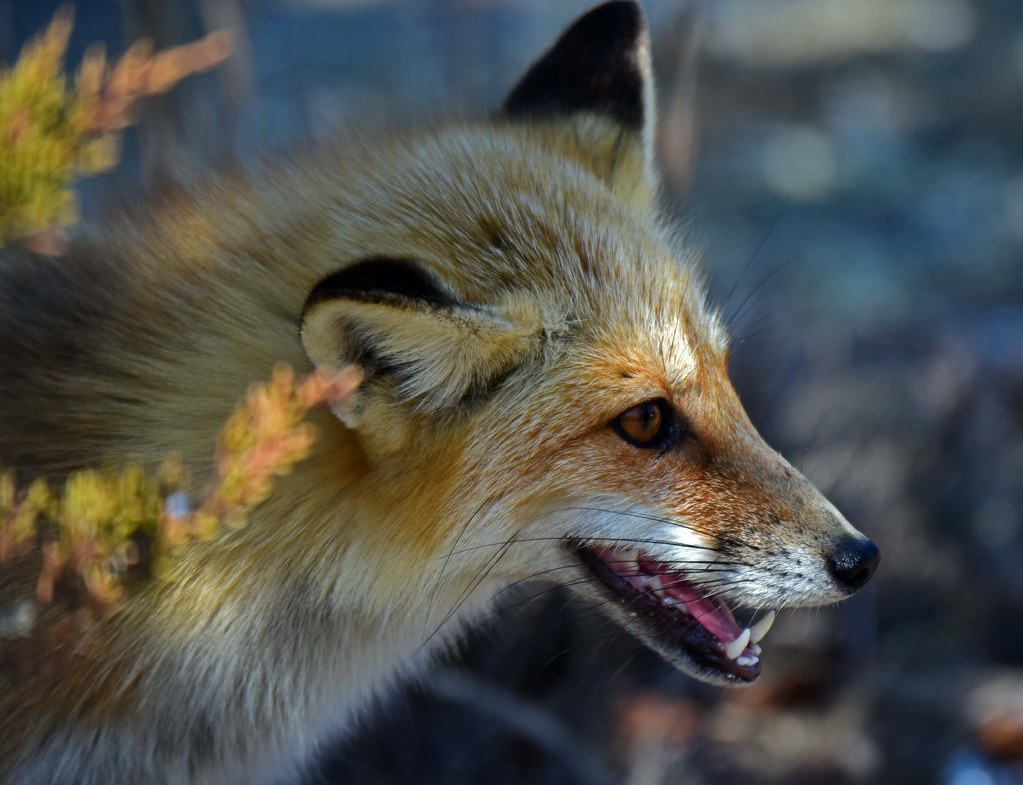Fantastic Mr.
Fox may have been a work of fiction, but as you can see from these
pictures, this man from County Kilkenny, Ireland is most definitely the
real thing.
The man is Patsy Gibbons and his two
adorable sidekicks are Grainne and Minnie. Gibbons nursed the foxes back
to health after they were found abandoned as pups, and although the
animals made a full recovery and could have returned to the wild, it
seems that they decided to adopt their rescuer instead! Somewhat
unsurprisingly, the three of them receive a lot of attention from local
children, so much so that schools have invited Grainne and Minnie to
come along so students can see them up close.
“I now have people from all over the
country and indeed the UK asking me for advice on looking after foxes,”
Gibbons told The Irish Examiner. “I’m no expert and I’m still learning
from them day-by-day (but) I’m happy to advise as a lay person.” (h/t: designyoutrust, irishexaminer)
Image credits: Clodagh Kilcoyne
Image credits: Clodagh Kilcoyne
Image credits: inesemjphotography
Image credits: inesemjphotography
Image credits: Clodagh Kilcoyne
Image credits: inesemjphotography
Image credits: Clodagh Kilcoyne
Image credits: Clodagh Kilcoyne
source

